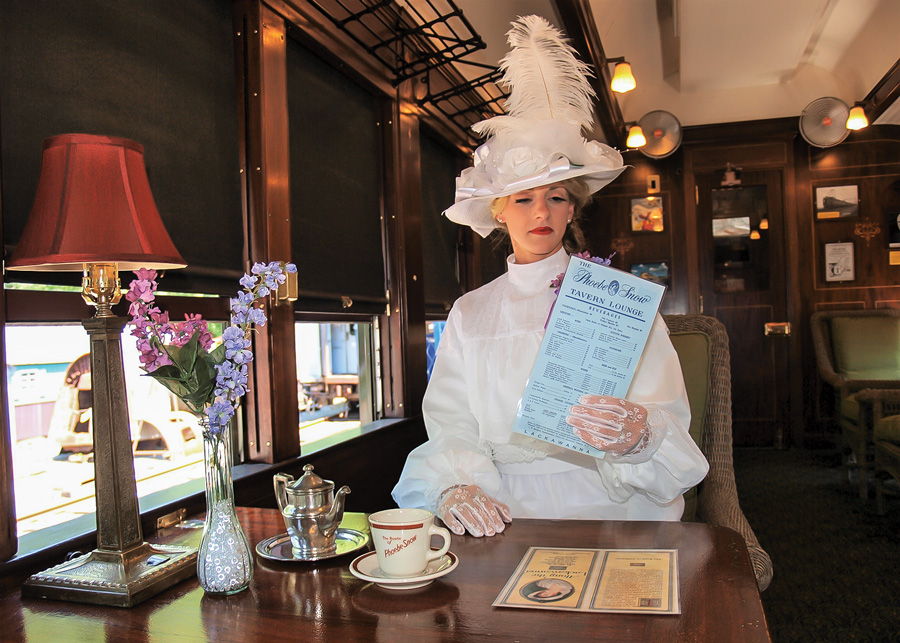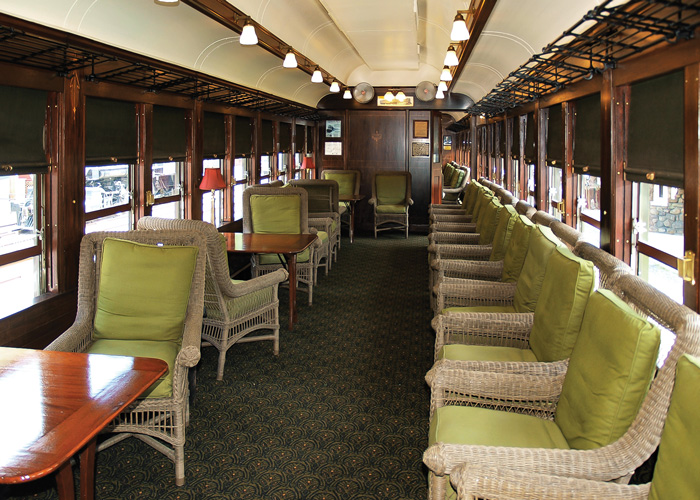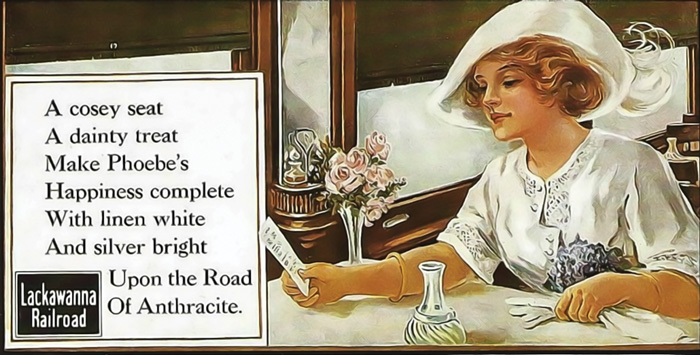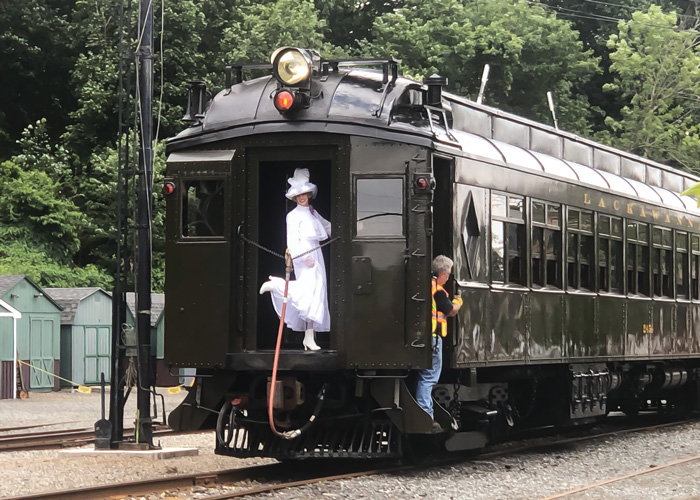Delaware, Lackawanna & Western Railroad “Club Car” No. 2454 has returned to service following an extensive restoration to its 1930s-era splendor by the Whippany Railway Museum and many benefactors and dedicated volunteers who worked over the course of seven years to turn a rotting hulk into a gleaming gem.

Car 2454 was built in 1912 and later converted from a steam-hauled to an electrical propulsion car in 1930. During that alteration, it became a subscription club car, reserved for the railroad’s most exclusive commuters—sponsored and elected by the other members—who paid an extra fare every month to ride it. The car was assigned to the Hoboken-to-Gladstone run, on a train known as “The Millionaire’s Express”, carrying high rollers back and forth in individual rattan armchairs, sipping cocktails served by their porter, and playing cards.
The car worked for the Lackawanna, Erie Lackawanna and finally NJ Transit until it was retired in 1984 after seventy-two years of continuous service. It was later acquired by the United Railroad Historical Society of New Jersey (URHS). The car sat in storage for two decades before it was donated by URHS to the Whippany Railway Museum, which began an extensive restoration with the help of StarTrak, Inc., of Boonton.
While the car’s exterior was severely deteriorated, its mahogany interior was relatively intact, although the eleven mahogany veneered doors and all mahogany window surrounds required rebuilding. Grimy, cracked woodwork varnish was stripped and refinished and the car’s ceiling was primed and repainted. The concrete floor was resurfaced, a new 1910-era railroad-design carpet was installed, and dark green linoleum was placed in the halls, restrooms and galley. Among the finishing touches, the individual wicker seats that held the well-heeled riders of this luxury parlor car, were duplicated in India.
Outside, 560 individual exterior window parts were replaced, along with steps, platforms, part of the perforated roof, and the bottom portion of the side sheets around the entire car. All wiring was replaced over several months, brakes were repaired, and a correct head¬light was donated, refurbished and installed.

The restoration was not without its trials. Three-and-a-half years into the process, having just completed work costing hundreds of thousands of grant and donated dollars, commuter car No. 2454 sat in the URHS Boonton yard, gleaming with a new paint job the color of milk chocolate, the iconic “LACKAWANNA” in broad gold letters across the top, when it was attacked by vandals who climbed up a ladder and punched holes in each window down the line. But the contractors and volunteers who spent countless hours of their personal time persevered until Lackawanna 2454 entered service on June 20, 2021, following a celebration at the Whippany Railway Museum.

On hand for the Whippany gala, christening the car in her name, was the inimitable Phoebe Snow, looking young, fresh and beautiful, even after a hundred years advocating for the railroad that invented her image in the early twentieth century. The Delaware, Lackawanna & Western (D,L&W) was an “Anthracite Road”, one that began in the anthracite coal fields of Northeast Pennsylvania and later linked the industrial metropolis to the mines. Anthracite or “hard coal” was considered the cleanest burning coal available; so clean, in fact, that Ms. Snow could travel the rails without fear of soiling her immaculate white dress. In 1949, the Lackawanna introduced The Phoebe Snow a modern stream-liner train that ran from Hoboken to Buffalo, one that gained a legendary reputation for service and comfortable travel until its retirement in 1966. Whippany’s Phoebe is an elegant contemporary advocate for the heritage of the ‘Road of Anthracite’.
“I would dare propose that the restoration of 2454 is probably one of the most significant — if not the most significant — rail car restorations in New Jersey (perhaps even the USA) in many a decade,” says Steve Hepler of the Whippany Railway Museum. “Unfortunately, it may well go largely unnoticed. If this restoration had taken place in England it would be national news, worthy of perhaps a Royal visit by HRH Prince Charles (who is a patron of several UK rail heritage organizations, and is a bit of a rail enthusiast), or even Her Majesty Queen Elizabeth II. That’s how it is in the UK; railway history and preservation is extremely important to those who live in birthplace of the railway. Here in America, the rebirth of 2454 will be praised by a knowledgeable, but scant few. The rest will shrug their shoulders and ask: ‘So, what’s my experience?’”
After a ride on the Phoebe, maybe not!

For more information about the car and excursions, please visit the Whippany Railway Museum website.
Part of the Morristown National Historic Park, the formal walled garden, 200-foot wisteria-covered pergola, mountain laurel allee and North American perennials garden was designed by local landscape architect Clarence Fowler.
The Millstone Scenic Byway includes eight historic districts along the D&R Canal, an oasis of preserved land, outdoor recreation areas in southern Somerset County
Paths of green, fields of gold!
Dedicated to preserving the heritage and history of the railroads of New Jersey through the restoration, preservation, interpretation and operation of historic railroad equipment and artifacts, the museum is open Sundays, April thru October.
Even today, if you needed a natural hideout—a really good one—Jonathan’s Woods could work.